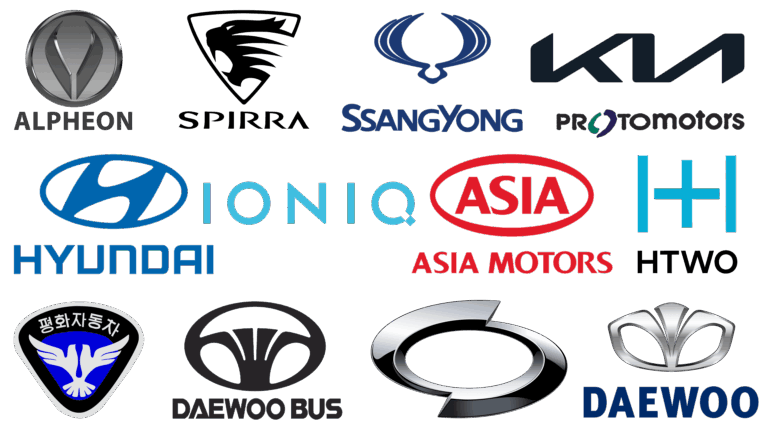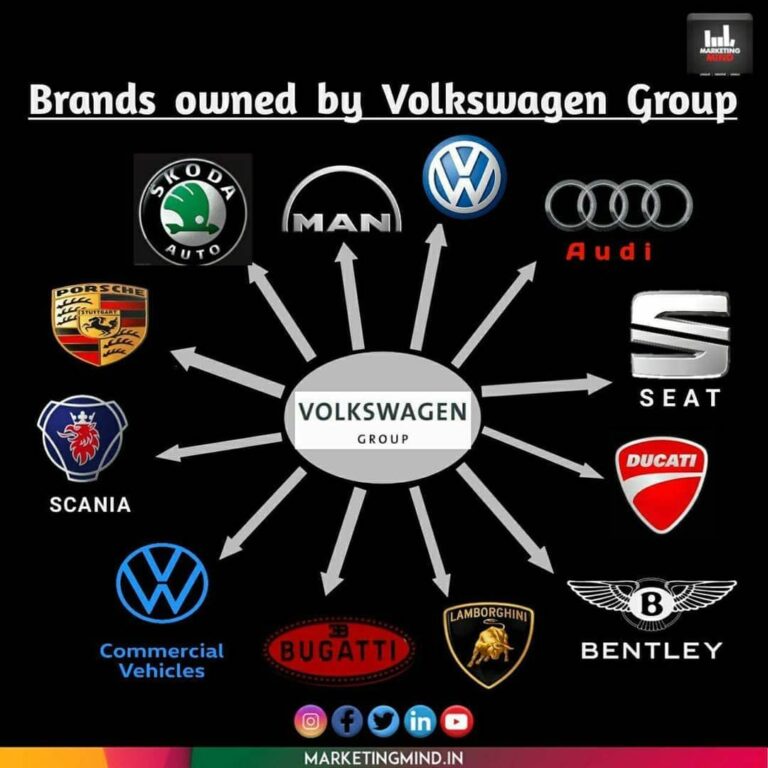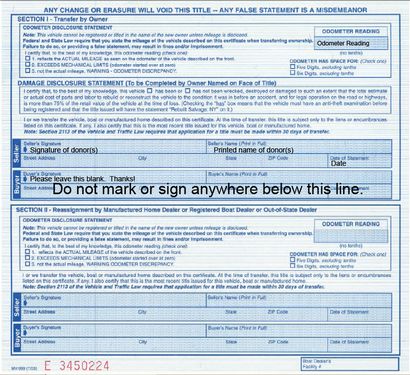What Is The Best Car Battery Brand? A Comprehensive Guide
What Is The Best Car Battery Brand? A Comprehensive Guide cars.truckstrend.com
The humble car battery, often overlooked until it fails, is the heart of your vehicle’s electrical system. It’s responsible for igniting your engine, powering your lights, and running all the complex electronics that make modern cars function. When it comes to finding "What Is The Best Car Battery Brand," the answer isn’t a simple one-size-fits-all. The "best" battery depends heavily on your specific vehicle, driving habits, climate, and budget. This comprehensive guide will dissect the factors that define a superior car battery, introduce you to the leading brands, and provide actionable insights to help you make an informed decision, ensuring you get the most reliable power source for your ride.
Understanding Car Batteries: Key Metrics to Consider
What Is The Best Car Battery Brand? A Comprehensive Guide
Before diving into specific brands, it’s crucial to understand the technical specifications that differentiate one battery from another. These metrics are your roadmap to choosing the right power source.
- Cold Cranking Amps (CCA): This is arguably the most critical metric, especially if you live in a colder climate. CCA measures the battery’s ability to deliver current at 0°F (-18°C). A higher CCA rating means more power available to start your engine in frigid conditions. Always match or exceed your vehicle manufacturer’s recommended CCA.
- Cranking Amps (CA): Similar to CCA, CA measures the battery’s ability to deliver current, but at a warmer temperature of 32°F (0°C). It will always be higher than the CCA rating. While important, CCA is generally a better indicator of starting power.
- Reserve Capacity (RC): RC measures the number of minutes a battery can continuously supply 25 amps of power at 80°F (27°C) before its voltage drops below a usable level. A higher RC means your battery can power essential accessories (like lights or radio) for longer if your alternator fails or your engine isn’t running, providing a safety net.
- Battery Type:
- Flooded Lead-Acid (Wet Cell): The most common and traditional type. These batteries contain a liquid electrolyte solution and require occasional maintenance (checking and refilling water levels, though many are now "maintenance-free"). They are generally the most affordable.
- Absorbent Glass Mat (AGM): A more advanced version of lead-acid, AGM batteries use fiberglass mats to absorb the electrolyte, making them spill-proof, vibration-resistant, and capable of deeper discharges. They offer faster recharging, longer life, and better performance in extreme temperatures but are more expensive. They are often found in vehicles with start-stop technology or extensive electronic demands.
- Gel Cell: Similar to AGM in being spill-proof, gel batteries use a silica-based gel to suspend the electrolyte. They are excellent for deep cycling but have lower peak power and can be damaged by overcharging. Less common for automotive starting batteries.
- Lithium-Ion: Emerging in the automotive world, primarily for high-performance or specialized applications. They are significantly lighter, offer extremely long life, and can provide consistent power output. However, they are currently very expensive and require specific charging systems.

- Size/Group Number: Batteries come in various physical sizes, designated by a "Group Number" (e.g., Group 34, Group 65, Group 24F). This number ensures the battery physically fits in your vehicle’s battery tray and that its terminals are in the correct position. Always use the group size recommended by your vehicle manufacturer.
- Warranty: A strong warranty (e.g., 36 months free replacement, 72 months pro-rata) indicates the manufacturer’s confidence in their product and provides peace of mind.
Top Contenders for "Best" Car Battery Brand
While "best" is subjective, several brands consistently rank high in performance, reliability, and customer satisfaction. Here are some of the leading contenders:
- Optima Batteries:
- Reputation: Renowned for their unique Spiralcell Technology, which uses tightly wound cells rather than flat plates. This design makes them incredibly resistant to vibration and provides superior starting power.
- Key Features: Available in RedTop (starting only), YellowTop (deep cycle and starting, ideal for vehicles with many accessories), and BlueTop (marine/RV). Spill-proof, maintenance-free, and known for consistent power delivery.
- Strengths: Exceptional vibration resistance, long lifespan, reliable performance in extreme temperatures, and excellent for high-demand applications.
- Considerations: Generally one of the most expensive options on the market.
- Interstate Batteries:
- Reputation: A highly trusted and widely available brand with a long history of reliability. Often the go-to choice for replacement batteries across the U.S.
- Key Features: Offers a broad range of batteries, including traditional flooded and AGM (e.g., MT7 AGM series). Known for consistent quality and good warranties.
- Strengths: Excellent all-around performance, good value for money, and strong nationwide support through their extensive dealer network.
- Considerations: While reliable, they might not offer the bleeding-edge technology found in some specialized brands.
- ACDelco:
- Reputation: As the OEM (Original Equipment Manufacturer) supplier for General Motors vehicles, ACDelco batteries are known for their quality and compatibility with a wide range of cars.
- Key Features: Offers Professional, Advantage, and Gold series batteries. Good balance of performance and affordability.
- Strengths: Reliable, good for general automotive use, and often a direct replacement for many vehicles.
- Considerations: Performance is solid but not necessarily outstanding in any single category.
- EverStart (Walmart Brand):
- Reputation: While a store brand, EverStart batteries are often manufactured by major battery companies like Clarios (formerly Johnson Controls), which also produces many other well-known brands.
- Key Features: Primarily known for affordability and widespread availability. Offers various tiers (Value, Plus, Max).
- Strengths: Highly accessible and budget-friendly. Provides decent performance for the price, especially for older vehicles or those with basic electrical needs.
- Considerations: Quality can vary slightly depending on the specific manufacturing plant. Lifespan might be shorter compared to premium brands.
- DieHard:
- Reputation: An iconic brand with a long-standing reputation for reliability, originally sold by Sears and now primarily by Advance Auto Parts.
- Key Features: Offers various lines, including the popular DieHard Gold (flooded) and DieHard Platinum (AGM), often made by Clarios.
- Strengths: Strong brand recognition, reliable starting power, and often come with competitive warranties. The Platinum AGM line offers excellent performance for demanding applications.
- Considerations: Pricing can be higher than budget options, especially for the premium lines.
- Odyssey (EnerSys):
- Reputation: Often considered a premium, high-performance battery, favored by enthusiasts and those needing extreme durability and power.
- Key Features: Utilizes Thin Plate Pure Lead (TPPL) technology, providing incredibly high CCA, excellent deep cycling capabilities, and a very long service life.
- Strengths: Unmatched durability, extreme vibration resistance, high power output, and exceptional lifespan. Can handle deep discharges without significant damage.
- Considerations: Significantly more expensive and heavier than most conventional batteries. Primarily for those who need top-tier performance and longevity.
- Bosch:
- Reputation: A global leader in automotive components, Bosch batteries are known for their engineering quality, especially for European vehicles.
- Key Features: Offers various lines like S4, S5, and S6 AGM, designed for modern vehicles with advanced electronics and start-stop systems.
- Strengths: High quality, reliable performance, good for cars with high electrical demands, and often a preferred choice for European makes.
- Considerations: Can be pricier and sometimes less readily available in all regions compared to domestic brands.
How to Choose the "Best" Battery for YOUR Car
Given the variety, how do you pinpoint "What Is The Best Car Battery Brand" for your specific needs?
- Consult Your Car’s Owner’s Manual: This is your primary source. It will specify the exact battery group size, minimum CCA, and often the recommended battery type (flooded or AGM). Deviating from these recommendations can lead to fitment issues or inadequate performance.
- Consider Your Climate: If you live in a region with harsh winters, prioritize a battery with a high CCA rating. For consistently warm climates, CCA is less critical, and you might focus more on RC.
- Evaluate Your Driving Habits: If you primarily make short trips, your alternator may not fully recharge your battery, potentially shortening its life. An AGM battery, which recharges faster and tolerates partial states of charge better, might be beneficial.
- Account for Accessories: Do you have aftermarket stereos, amplifiers, extra lighting, or other power-hungry electronics? These put additional strain on your battery. An AGM or deep-cycle battery with a higher RC will better handle these demands.
- Set Your Budget: While a higher price often correlates with better performance and longevity (e.g., Optima, Odyssey), a mid-range battery from Interstate or DieHard might be perfectly adequate and offer excellent value.
- Check the Warranty: A longer free-replacement period is always a plus. Understand the pro-rata period as well.
Installation and Maintenance Tips for Longevity
Even the best battery won’t last if not properly cared for.
- Safety First: Always wear safety glasses and gloves when handling batteries. Batteries contain corrosive acid.
- Proper Installation: Ensure the battery is securely mounted to prevent vibration damage. Connect terminals correctly (positive first, then negative when installing; reverse when removing).
- Keep Terminals Clean: Corrosion (a white, powdery substance) on terminals can impede current flow. Clean them regularly with a wire brush and a mixture of baking soda and water. Apply an anti-corrosion spray or felt washers.
- Regular Testing: Periodically check your battery’s voltage with a voltmeter (should be around 12.6V fully charged). A load tester can give a more accurate picture of its health.
- Use a Trickle Charger/Battery Tender: If your vehicle sits unused for extended periods, a smart charger can maintain the battery’s charge and prevent sulfation, extending its life.
- Avoid Deep Discharges: Letting your battery completely drain repeatedly significantly shortens its lifespan, especially for traditional flooded batteries.
- Recycle Old Batteries: Car batteries contain hazardous materials. Always take your old battery to an auto parts store or recycling center; it’s often required by law.
Challenges and Solutions
- Challenge: Premature Battery Failure: Often caused by extreme temperatures, vibration, or consistent deep discharges.
- Solution: Choose a battery designed for your climate and driving habits (e.g., AGM for high vibration or deep cycling). Use a battery tender if the vehicle sits.
- Challenge: Corrosion on Terminals: Leads to poor electrical connection and starting issues.
- Solution: Regular cleaning with a wire brush and baking soda solution, followed by an anti-corrosion spray.
- Challenge: Parasitic Drain: Something in your vehicle is slowly drawing power even when the car is off, draining the battery.
- Solution: Have a mechanic diagnose and fix the source of the drain (e.g., faulty light, miswired accessory).
- Challenge: Incorrect Battery Size: The battery doesn’t fit the tray or terminals are reversed.
- Solution: Always double-check the Group Number and terminal configuration (L or R for positive terminal location) before purchase.
What Is The Best Car Battery Brand? Price Table
Please note that prices are approximate and can vary significantly based on retailer, promotions, specific battery model, and region. These are general ranges for typical passenger vehicle batteries (not specialized commercial or high-performance race batteries).
| Brand | Type (Common Series) | Typical CCA Range | Price Range (USD) | Key Feature/Benefit |
|---|---|---|---|---|
| Optima | RedTop (Starting), YellowTop (Deep Cycle/Starting) | 720-800, 750-800 | $200 – $350+ | Superior vibration resistance, long life, Spiralcell Tech |
| Interstate | Mega-Tron Plus, MT7 AGM | 600-800, 700-850 | $150 – $250 | Reliable, widely available, good all-rounder |
| ACDelco | Professional, Gold, AGM | 500-800, 600-850 | $120 – $220 | OEM quality for GM, good value, reliable |
| EverStart | Value, Plus, Max | 500-800 | $100 – $180 | Highly affordable, widely accessible |
| DieHard | Gold, Platinum (AGM) | 600-850, 700-900 | $150 – $280 | Strong performance, competitive warranty, well-known |
| Odyssey | PC Series (TPPL) | 700-1150+ | $250 – $450+ | Extreme performance, unmatched durability, very long life |
| Bosch | S4, S5, S6 AGM | 500-850, 600-900 | $130 – $260 | High quality, good for European vehicles & modern tech |
Frequently Asked Questions (FAQ)
Q: How often should I replace my car battery?
A: Typically, a car battery lasts 3-5 years, but this can vary based on climate, driving habits, and battery type. Regular testing can help you determine its health.
Q: Can I put an AGM battery in a car that came with a flooded battery?
A: Yes, in most cases, an AGM battery is a superior upgrade. It offers better performance, longer life, and is spill-proof. However, ensure it’s the correct group size and your vehicle’s charging system is compatible (most modern alternators are).
Q: What’s the difference between CCA and CA?
A: CCA (Cold Cranking Amps) measures starting power at 0°F (-18°C), while CA (Cranking Amps) measures it at 32°F (0°C). CCA is generally a more critical rating for real-world starting performance, especially in colder climates.
Q: How do I know what size battery my car needs?
A: Check your vehicle’s owner’s manual, the existing battery, or use an online battery finder tool on an auto parts store website, which requires your car’s make, model, and year.
Q: Is a more expensive battery always better?
A: Not always "better" for every individual. While premium batteries like Optima or Odyssey offer superior performance and longevity, they might be overkill for a basic commuter car. The "best" battery balances performance with your specific needs and budget.
Q: How can I extend my battery’s life?
A: Keep terminals clean, ensure it’s fully charged regularly (especially if making short trips), use a battery tender if the car sits, avoid extreme temperatures when possible, and ensure it’s properly secured to prevent vibration.
Conclusion
Determining "What Is The Best Car Battery Brand" is less about finding a single definitive answer and more about making an informed choice tailored to your specific circumstances. By understanding key metrics like CCA, RC, and battery type, and considering your vehicle’s requirements, climate, and driving habits, you can confidently select a battery that offers the best blend of performance, reliability, and value. Investing in a quality battery and practicing good maintenance habits are crucial steps to ensure your vehicle remains a dependable source of transportation, keeping you on the road for years to come.





